12 - 48 Months
Perspectives on feeding: Getting real about sugar

Instead of teaching our kids that there’s bad foods and good foods, I like to ask kids: “What does this food do in your body? Does it help your eyes? Does it help your heart? Does it help your brain? Does it help your muscles?”
Jennifer Anderson, Registered Dietitian, @kids.eat.in.color
Maple syrup, beet sugar, molasses, honey… there are so many alternatives to refined sugar. But despite a parent’s best efforts, it’s hard to avoid the processed stuff all together. And is that really the best approach anyhow? How much sugar restriction is too much? Can it backfire? Jessica Rolph welcomes Registered Dietitian Jennifer Anderson to the show. She is the mom behind Kids Eat In Color. Her specialty is forming healthy eating habits in the home.
Key Takeaways:
[1:54] The government released the first-ever dietary guidelines for infants and toddlers recommending no added sugar for children under age 2. Does this mean you should be making your kid’s first birthday cake with beet sugar?
[4:36] Jennifer gives suggestions to parents who have mostly avoided sugar for their baby, and want to introduce sugar after two.
[6:38] Jennifer talks about how overly restricting sugar for children can backfire.
[8:54] Consider this alternative to: No dessert until you finish your veggies!
[13:22] How do we encourage our kids to love veggies?
[15:22] Jennifer and Jessica discuss intuitive eating.
[18:27] Jennifer reviews the top questions she hears from parents who struggle to feed their toddlers.
Mentioned in this episode:
Get your Free Child-Feeding Guide at Kids Eat In Color
Transcript:
Jessica: The carrot stick… or the chocolate square?
It’s a choice that doesn’t feel any easier now than it did when I was a kid.
There’s a reason sugar has such lasting appeal. And yet we know we should limit it, particularly for our children. I want my kids to be able to eventually make healthy choices for themselves, and have a healthy relationship to sugar.
Registered dietitian Jennifer Anderson is here to help show us the way. She is the mom behind “Kids Eat In Color”. Her specialty is forming healthy eating habits in the home. Late last year, the government released the first ever dietary guidelines for infants and toddlers. They recommend no added sugar for children under age 2.
So I asked Jennifer: Does this mean I should be making my kid’s first birthday cake with beet sugar?
Jennifer: For generations, at least in the United States, babies have been eating a smash cake on their first birthday. Do I even sort of care what you choose to do on your baby’s first birthday? I don’t, I don’t. [chuckle] I really don’t think the first birthday has to establish anything. Honestly, most babies at their first birthday with a smash cake that’s covered with icing, they eat like two tablespoons and then they go play. It’s just not that big of a deal. I gave my kids stuff with sugar in it at that age too. I don’t think it really matters. Here’s what I think does matter. Are we training them to expect everything to be sweet at the age of one, two, three, four, five, six, seven? Are we training that or are we training them to enjoy a lot of different flavors? So the coconut sugar, the honey, molasses, maple syrup, whatever it is, it doesn’t really matter what the sweetness is, it’s just that they’re getting used to sweet.
So even some of the newer things like monk fruit sweetener or even Stevia or whatever sweetener you have around, if it tastes sweet, it’s training them to enjoy that sweetness. That said, this idea that we shouldn’t introduce sugars until two, that’s based on newer research, it also factors in energy consumption and that sort of thing. And we also have to balance that with what is day-to-day like? What is my culture like? What’s going on? So being a dietician, all the things I said before I had kids, one of which was, “Oh, I’ll never give my… [chuckle] I’ll never give my kids sugar. My kid will eat totally healthfully.” All that stuff. Of course, I had my kid, and I didn’t give him a lot of added sugars in the first year, but he definitely had a sweet cake and all that stuff. And then he’s 14 months old, I am pregnant with my second child, I’m lying on the couch feeling like I’m going to die, and I think, “Oh, I’m eating ginger snaps. Maybe if I give him a ginger snap, he will leave me alone for 10 minutes.” So here I am, a dietician, and my son has sugar for the first time at 14 months old.
How to introduce sugar to your child
Jessica: Yes, I totally get it. I can imagine you on that couch with that ginger snap, I’ve heard this story before, and I totally can appreciate you just wanting to have a minute [chuckle] to yourself. What about a parent who has just mostly avoided sugar for their baby, how do you recommend them introducing sugar after two?
Jennifer: Yeah, so I think naturally, it just kind of happens. The grandparent gives the kid a cookie. You enjoy something together. Maybe somebody has a birthday and the 2-year-old thinks, “Oh, I want some of that,” and then they eat some. Eventually it happens. The child, if they’re in a family where sugar is around, they’re going to be exposed to sweet things. And I think at that point, that’s the time where your kid’s life is going to change and they’re going to think, “Oh wow, there’s this thing out there. Oh, that tastes good.” And as they get older, they’re going to be exposed to more and more things that are outside of your control, and I think that is the point at which you can take one of two paths. You can go down the path and you can say, “I am going to try to restrict this at every single level. I’m never, ever going to have it in my house. If my kid goes over to a friend’s house, I’m going to say, ‘No, you can’t have that.’
I’m going to tell all the grandparents they are never allowed to give my kid anything sweet.” You can go down that path, or you can go down the path that says, in general, I’m not going to have this in my house ‘cause that’s not what we eat in our house. In general, I’m going to ask the grandparents to tone it back to help them understand what’s appropriate for my child, maybe. If you could do that with your grandparents. When my kid goes to a birthday party, I’m not going to worry about it. They’re going to eat what’s there and then they’re going to come back. And when my child expresses an interest in a food, I’m going to model how they can incorporate that into their life without becoming obsessed about it.
The downside of overly restrictive diets
Jessica: I kind of took, I will say, with my first that overly restricted kind of perspective, and now he really does love sugar and he has trouble moderating. And I think with my second and third, they happen to sort of have a little bit of a healthier relationship with sugar. Can you talk about overly restricting sugar for children and how that can backfire?
Jennifer: Yeah, so when kids are overly restricted, when they think that sugar is a bad food, suddenly they think, “Ooh, if it’s bad, maybe it’s good.” And it gets complicated because maybe you’ve said, “Oh, sugar is bad.” or there’s the message out there, “Sugar is poison. Sugar isn’t good for you.” But then they taste it and they are thinking, “This is the best thing I’ve ever had in my mouth. So if this is bad, then maybe I want bad things and I want to eat more of this.” The other thing is, the more we feel restricted as humans, and we see this in people of all ages, children and adults, the more we feel restricted, the more when we do have access to something, we want to eat as much as we can of that. And that’s where you see kids who… They’ve never, ever been allowed to have candy, and all of a sudden they eat tons of it.
But I think it’s how you talk about it. Are you hyping it up or are you just serving it alongside a meal? So we often… When my kids get candy, we often have them put the candy alongside their plate. Afternoon snack time, and here’s a piece of Halloween candy. Morning snack, and here’s a piece of your Easter candy. You can even do this with dinner, you can put…
We just did this the other night. My kids were developing this obsession with ice cream, they were asking for ice cream every single day, and I thought, “Oh, that’s kinda weird, I should use one of my own techniques.” which is to put a small, child-size serving of ice cream right on their plate with their dinner. And we had ice cream two nights in a row, and they stopped being obsessed with ice cream. We still have it on occasion, but sometimes a couple nights in a row or a couple days in a row really takes it off the pedestal, and they’re like, “Oh, I’m not being deprived.” We have ice cream frequently, we’re not eating a ton of it, but also it’s just not that big of a deal.
Serve dinner with dessert
Jessica: And I often tell my children they can’t have dessert until they’ve finished their dinner, so this concept of putting it alongside is really new for us. Can you talk about why telling your children that they can’t have dessert until they finish their dinner is a challenge?
Jennifer: So if I want to reward my child, I say, “Eat your broccoli, and then you get dessert.” Do this, and then you’ll get that. Whatever happens afterwards, that is what they’re going to think of as a reward, and the more we reinforce this, the bigger the reward feels. Like, “Eat your broccoli, you get dessert. Eat your broccoli, you get dessert.” The more they learn this, the more they think, “Dessert is the reward. It’s amazing. It’s right in front of me. I always want that reward.” We’re practicing this path in the brain. What we really want deep down is for our kids to love vegetables more than ice cream. I think most parents really want their kids to be eating nutrient-dense foods as much as they can. So what we really want is everything to be equal, or vegetables to be even better. Now, I think that’s tricky because we do as humans have this preference for sweet and kids are even more sensitive to sweet. So I think it’s a stretch to say our kids are going to absolutely love broccoli way more than ice cream, but I do think we can really level the playing field. And when we put dessert on the plate with dinner, we’re sending the message, one, you can choose to eat whatever you want, from what’s on your plate and what’s on the table, and two, they’re all the same.
Dessert isn’t any more special than broccoli. You don’t have to do anything to get it, in fact, you can eat it first. And if you serve a serving size that is small, that is a child-size portion, meaning they can’t actually fill up on it, then nine times out of 10 parents report that their kids actually go on to eat their dinner and they’re not obsessing about the sweet thing throughout the entire dinner time. Now, if your family doesn’t do dessert, that’s fine. A lot of parents are like, “Well, do I have to serve dessert?” No, you don’t have to serve desert if that’s not part of what you do. But if you’re sitting down to dinner and you’re finding that your kids absolutely cannot eat their dinner without a dessert incentive, or if your kids are thinking about dessert for the entire dinner, whining and crying about it, and you’re getting into this two more bites until you get dessert, then it’s time to really try another strategy, one that might actually solve your problem.
Jessica: This is the most amazing advice. It’s almost like I’m having personal [chuckle] advice given right now. It’s so helpful because my son will jump up before everybody else is done and be like, “Okay. Can I get my Girl Scout cookies? Can I get my two Girl Scout cookies now,” or trying to move on for dessert, and I wonder what it would be like to actually just serve it alongside. I’m going to try that.
Jennifer: Yeah. And it could feel really scary because we grew up differently, so it feels weird, and it seems counterintuitive because there’s all these fears, “What if my kid only eats the Girl Scout cookies?” Because it is possible, especially when a kid has had an obsession about a dessert, that they are only going to get the cookies. But here’s the thing, in all the years of doing it with my own kids and all the years of recommending this and seeing this with other families, yes, there are definitely times when the kid only eats the cookies, but that’s like one time out of 100 that the kid only eats the cookies. And often that child is really having a lot of other feeding difficulties.
And in general, I recommend that you let kids eat as much as they want of whatever components of the meal there are.
But with dessert, with dinner, I recommend keeping it to that child-sized portion, and if they say, “Wait, I want more,” you could say, “Well, there’s no more on the menu for tonight. We’ll have more tomorrow,” or, “We’ll have more on Tuesday,” “We’ll have more on Saturday.” Whatever that day is, let them know when you’re going to have it again, and your child may have some really big feelings and that’s perfectly fine. You can stay with them, you can let them have their feelings, you can talk about it later and this might go on for up to a couple of weeks, depending on how fast your child adapts to change. But once you get over that initial hump and your child understands what’s coming and what the expectations are, that is when you will really find this new experience of your child not being as ramped up about the dessert.
How to get kids to eat veggies
Jessica: Yeah, that makes a lot of sense. And then how do we encourage our kids to love veggies?
Jennifer: One of the biggest things that you can do is enjoy them yourself, have a meal time together, make eating together a priority as much as you can within your context, and I always like to modify that because not all of us can have that idealistic, the whole family around the table at the exact same time every night. But any time that you can meet, the child and the adult at a table, whether that’s snack time, or breakfast, or lunch, or dinner or whatever it is, the more you can eat with your child, the more that they will see you eating vegetables, and the more that they will learn that that’s normal and that’s what people do. Your actions are going to be much more important than any message you ever say to your child. You can say over and over and over, “Vegetables are good for you.” That’s just going to go over their head and it’s not really going to ever change anything.
But if you’re sitting down with your child and you’re modeling eating those vegetables day in, day out, year after year, that is going to sink into who they are and what they understand eating to be, so what you do is going to be much more important. The other thing that I recommend is not pressuring your child to eat it, not making them try it, by not making them finish their plate. And if we really want to step back from those battles at meal times, we really need to say, “Oh, you don’t have to eat it. No problem.”
What is intuitive eating
Jessica: This is just a whole new mindset and it’s really referencing intuitive eating, and I think that there’s a lot of questions where… I’ve had questions about “Wait, there is healthy, good food. There is bad unhealthy food,” but intuitive eating takes away that whole notion. Can you speak to that a little bit?
Jennifer: Yeah so intuitive eating is a method of helping adults recover from diet culture, and when I say diet culture, I mean this really strong obsession with weight, body shape, body size and diets to decrease body weight. And at least in the United States we are just completely surrounded by diet culture all the time and this obsession with weight and losing weight. And so in intuitive eating, part of that form of help and therapy is really to tell people all foods can fit in a healthy diet. We can be healthy and still have a cookie, we can be healthy and still eat ice cream, we can be healthy and eat all the different foods, and that gives people permission to get in touch with their hunger and fullness cues. “What foods do I actually like? What foods do I not like?” Now I like to really draw the distinction between intuitive eating as a form of helping adults get out of diet culture and learning to eat intuitively for children, because children ideally, we would hope, aren’t really entrenched in diet culture at the age of one, two, although we’re starting to see more and more three-year-olds become aware of dieting, but we really want to help kids have a good relationship with food from the start, so that they don’t ever get to the place where they have to do intuitive eating. We want to help them learn to listen to their hunger and fullness cues from the beginning.
We want to help them learn that “No, your friend’s cookie is not poison.” Instead of teaching our kids that there’s bad foods and good foods, I like to really teach kids, “What does this food do in your body? Does it help your eyes? Does it help your heart? Does it help your mind? Does it help your brain? Does it help your muscles?” There’s so many things that we can help kids learn so that they don’t fall into diet culture as easily. They understand their hunger and fullness cues, they understand that there’s no such thing as a bad food, they understand that vegetables do lots of different things in our body, they understand that cookies give us energy and not much else, they understand all these things, right? We can teach kids to have a really deep understanding of food and what it means to be in communities and families and how there’s all sorts of different foods that come in and out of our experience as they grow up.
Pain points with feeding toddlers
Jessica: And I love how you have examples on kids.eat.in.color on Instagram and on your channels about examples of how to talk about these kinds of foods with children to just help them understand the richness of what a food does for your body. So I love that. Any other feedback that you get from parents that’s like top questions of parents of toddlers that our listeners would love to hear about?
Jennifer: Yeah, so there’s so many pain points when it comes to feeding a toddler. One of the really common ones I hear is, “How do I help my kids sit at the table because they’re super squirrelly and they’re running all over the place?” One of the recommendations I have for that is to train them to sit for an age-appropriate amount of time, which is way less than you ever imagine, and I actually have a free child-feeding guide that includes how to take off the pressure, how to get your kid to sit at the table, how to do all those things. So that is a really useful resource especially for toddler parents and beyond. It’s for 0-10, but I like to use a timer to train kids to sit at the table for maybe a minute, and then let them get down and then increase the timer a little bit, and then let them get down, and pretty soon you eventually find your toddler’s sitting attention span. For my kids that was maybe 10 minutes. I have super energetic kids, and if you can get your kids sitting at the table for five to 10 minutes, you are winning. You know what I mean? That can be just one of the huge sources of stress.
Jessica: Yeah, it’s all about expectations. I think that we have the expectation that we’re going to raise children who have good manners, who are… Can sit at a family dinner table, and one of the big breakthroughs for our family has been to try and just serve everybody at the same time. I always find myself plating the kids first and then they want to start eating and it’s really hard to get them to wait for us, and then they’re done before we’re even sitting down. So…
Jennifer: Yep, we have the same problem. We’re always working out like, “Okay, guys, we’re all going to wait.”
Jessica: It’s so hard.
Jennifer: It’s tricky, yeah.
Jessica: This has been so great, Jennifer. We love your content, and I encourage everyone to go on to kids.eat.in.color on Instagram. Jennifer has beautiful information, super helpful information for everybody.
Jennifer: Well, thank you so much for having me, it’s been great to be here.
Get more of Jennifer’s nutritional tips for babies and toddlers at Kids Eat In Color. You’ll find other feeding resources on Lovevery’s Blog, Here with you. We’re also now offering Parent Courses! Get more information on “Food Before 1.”
Posted in: 12 - 48 Months, 18 - 48 Months+, 0 - 12 Months, Eating and Drinking, Birthday, Feeding, Feeding, Nutrition, Parenting
Keep reading

18 - 48 Months+
0 - 12 Months
Lovevery’s Disability Support Service offers personalized guidance
Lovevery’s mission is right in our name—we love every baby and child. Today I’m so proud to say that we’re further realizing that mission, by better serving more families. As you know, our Play Kits are staged by a child’s age. This works for many families, but I know firsthand that it’s not ideal for … Continued

0 - 12 Months
Lovevery Introduces New App for Parents
We’re so excited to introduce our new Lovevery App, free and available to Play Kit subscribers 🎉

12 - 48 Months
0 - 12 Months
Lovevery for Target
Experience our new Target stage-based play essentials, as well as familiar favorites like The Play Gym and The Block Set, straight from your local Target location.

12 - 48 Months
18 - 48 Months+
0 - 12 Months
8 ways to celebrate Earth Day as a family
Earth Day is a time to celebrate nature and the environment. Teach your children how to take care of the Earth with these fun activities, crafts, and books.

12 - 48 Months
Welcome spring with these colorful, toddler-friendly DIYs
Incorporating color into these fun DIY activities stimulates your toddler's senses and deepens their learning.

0 - 12 Weeks
3 - 4 Months
5 - 6 Months
7 - 8 Months
9 - 10 Months
11 - 12 Months
0 - 12 Months
The complete guide to baby development milestones
We compiled this expert guide to help you know what to expect for your baby's growth and month-by-month development.
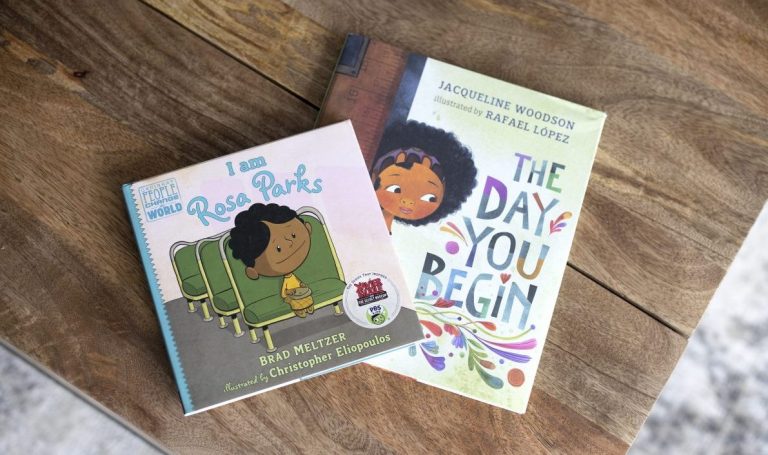
12 - 48 Months
13 - 15 Months
0 - 12 Months
Celebrating Black History Month with babies and young children
Children of all races are never too young to take part in Black History Month. Here are ideas on how celebrate with your child, along with a list of books that center Black people and culture.

12 - 48 Months
0 - 12 Months
What are Montessori toys?
Some toys have characteristics that are aligned with Montessori principles. Learn what they are, why they can benefit your child, and how to introduce them.

12 - 48 Months
0 - 12 Months
You can’t balance work and parenting during Covid. That’s OK.
As we continue to adjust to new normals, some things have stayed the same: working while caring for young children during a pandemic is really hard. Here are a few ways to ease the burden.

12 - 48 Months
4 activities that expose your toddler to the wonder of color
Color brings fresh interest to STEM and art projects for your toddler. Here are 4 easy ones that use food coloring.

12 - 48 Months
6 outdoor activities you can bring inside when the weather turns
We’ve collected 6 classic outdoor activity you can bring inside to enhance sensory development and gross and fine motor skills—even when the weather’s bad.

12 - 48 Months
Our simplest activities to do at home with your toddler
When you're short on time, try these 15 simple play ideas for spending time at home with your toddler.

0 - 12 Months
Diaper bag must-haves from real parents (and yes, all 30 are essential)
We talked to real parents about their must-have diaper bag essentials and on-the-go hacks. The list is extensive but ensures you won't be caught unprepared.

11 - 12 Months
13 - 15 Months
16 - 18 Months
18 - 48 Months+
Why children are so attached to their loveys (and what to do if your child loses theirs)
Loveys, also known as "transitional objects," help babies and toddlers through transitions. Learn why these blankies, stuffies, and more are important and what to do if one goes missing.

12 - 48 Months
How to celebrate Halloween and maintain physical distance
Halloween will be different this year—but that doesn't mean we can't still celebrate it with our young children.

18 - 48 Months+
Pretend Play: Outdoor Picnics
Pretend play is a great way for your child to apply their current skills and use them for different purposes.
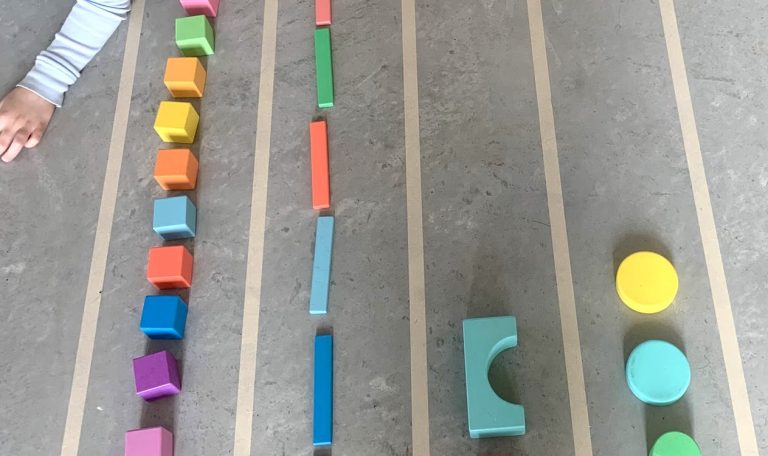
18 - 48 Months+
Making graphs with toys
Painter's tape and small toys can turn into a great pre-math activity for young kids who love to sort and compare.
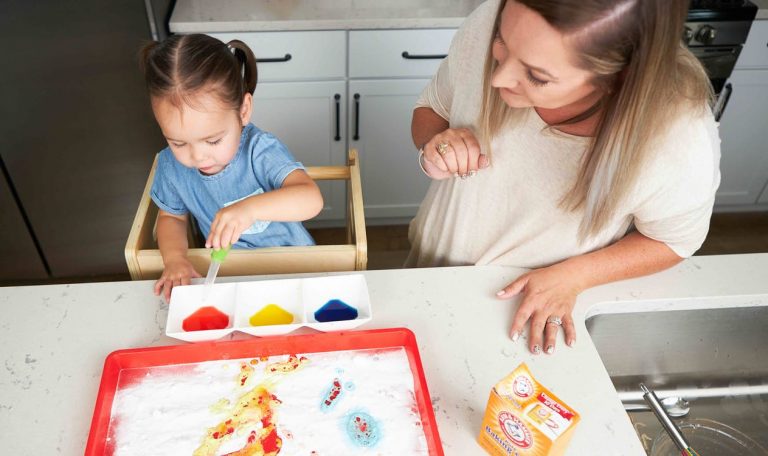
18 - 48 Months+
4 easy water dropper activities
Eye droppers are great for fine motor practice, precision, and focus, and can make an activity feel fresh and new.

18 - 48 Months+
Dot sticker play
Your child gets to work on their fine motor skills when your introduce versatile dot stickers.

18 - 48 Months+
Cracking eggs with your child
Cracking eggs takes a bit of training, but it's a great Montessori practical life activity you can begin around 3-years old.

18 - 48 Months+
Copy that monster
This game is not only good for precise drawing practice, it's also an exercise in in using descriptive words.

18 - 48 Months+
3 fun ways to get the wiggles out
Kids need to run, jump, exercise, and work out the wiggles regularly. Try these 3 simple ways to get moving.
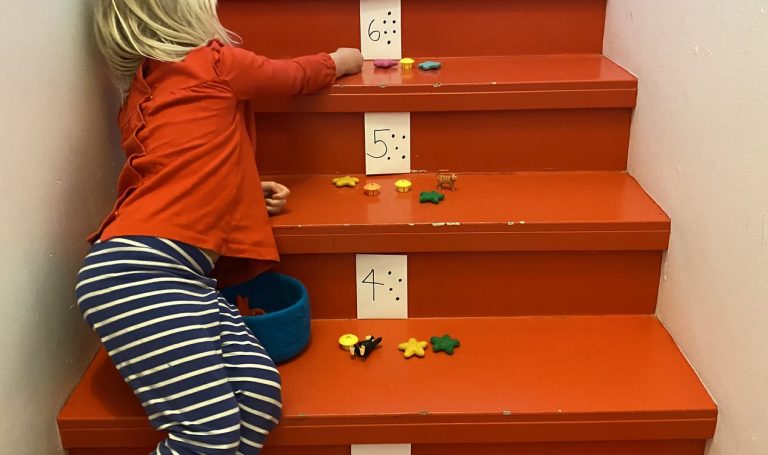
18 - 48 Months+
Stairway math
This activity gets the wiggles out while giving your child an opportunity to practice counting and identifying numbers.

18 - 48 Months+
Fine motor threading activity
This activity is a great way for your child to strenghen fine motor skills needed for precision in their grasp, manipulation, and release.

18 - 48 Months+
7 Best Quotes About Parenthood
Here is a collection of Lovevery's favorite quotes to inspire and support you.

18 - 48 Months+
Cognitive and Emotional Benefits of Bath Time
Bathtime has many cognitive and emotional benefits beyond simply keeping your baby clean. Here's how you can help your baby get the most out of bathtime.

18 - 48 Months+
Toddlers and Their BIG Emotions
From the moment they're born, children need reassurances that a range of feelings is normal, and that emotions come and go.
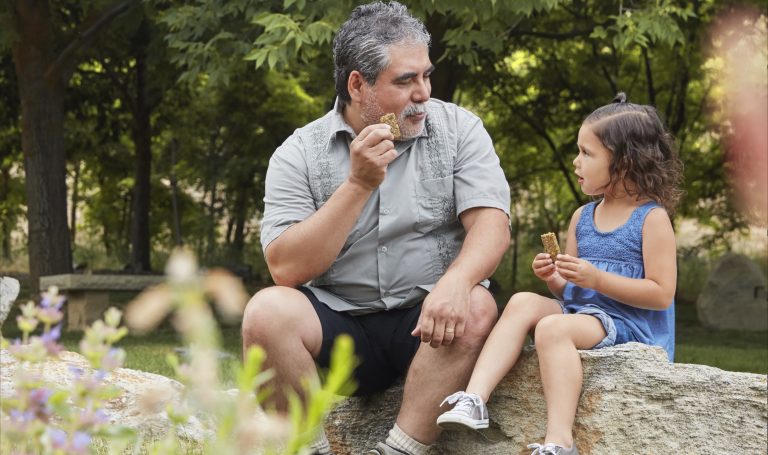
12 - 48 Months
0 - 12 Months
This powerful activity can change your child’s brain
Back-and-forth conversations with your baby have a significant impact on language development and are important for social, emotional, and cognitive growth.

28 - 30 Months
18 - 48 Months+
This classic “toy” unlocks so much development
Why are blocks so foundational to childhood? Block play supports language development, STEM concepts, visual spatial skills, and more.

18 - 48 Months+
How Eye Contact Affects Your Baby’s Brain Development
A study showed that babies' brains synch with their parents’ when they learn about their social environment. Read about how eye contact plays a crucial role in developing emotional connections.

18 - 48 Months+
The Perfect Play Dough Recipe
Playdough is not only a fun and creative activity for kids, it also helps develop motor skills and finger strength. Follow our favorite homemade recipe.

18 - 48 Months+
The Huge Impact Singing Has on Your Baby’s Brain
Experts have found that singing lowers your baby's heart rate, descreases anxiety, and releases endorphins.

18 - 48 Months+
When are children ready to share?
Learn the differences between turn-taking and sharing, and when children are ready for each.

18 - 48 Months+
5 facts about toddlers to help you better understand yours
Your toddler is growing every day—physically, mentally, and emotionally. We gathered together five key facts to help you better understand your toddler and what's happening with their development right now.

18 - 48 Months+
Why do children love feeling dizzy?
Spinning around and the resulting dizziness are significant tools children use to learn about their bodies. Learn more in our blog post.
